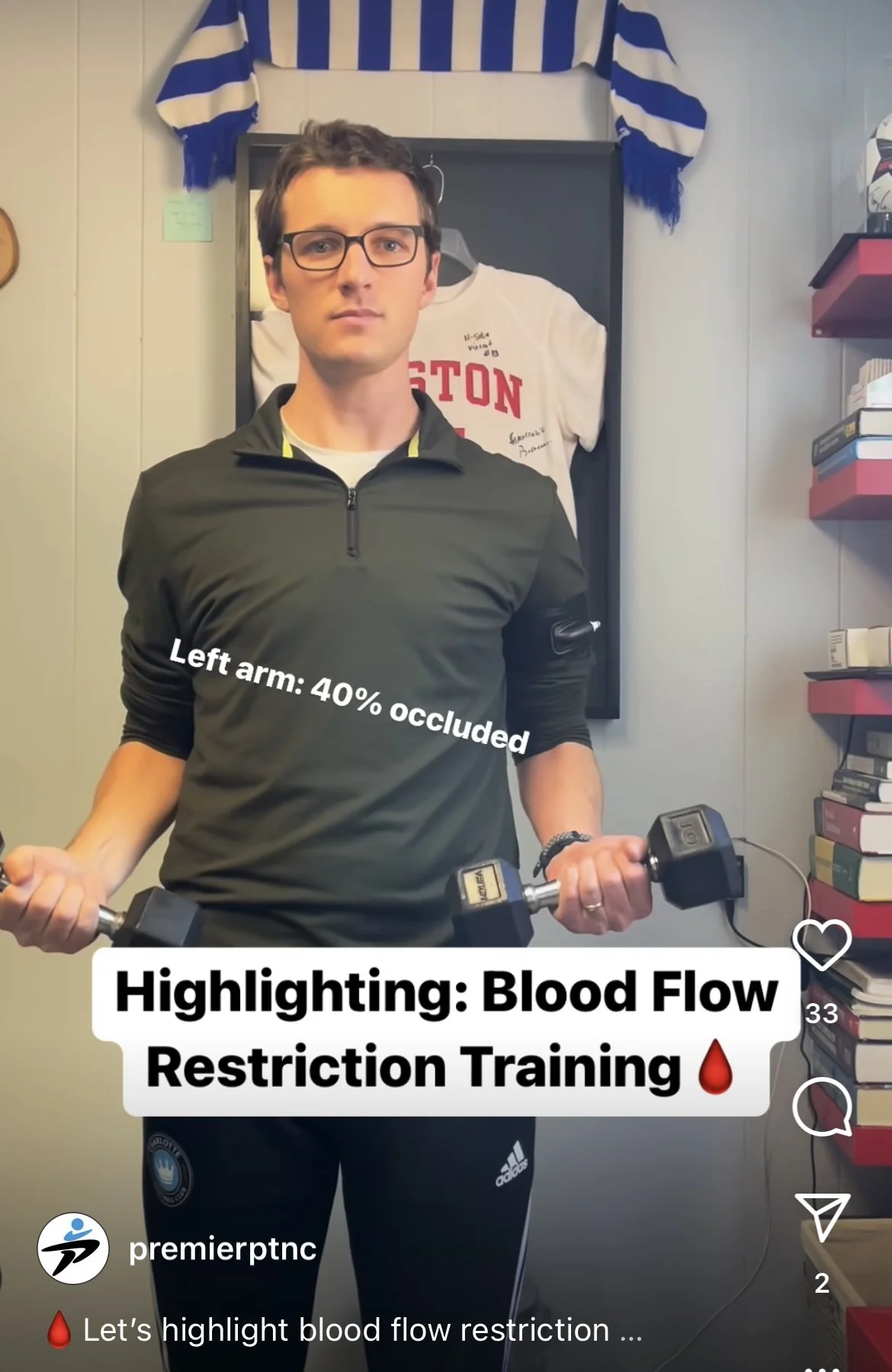Could You Benefit from Blood Flow Restriction Training?
They say patience is a virtue, but sometimes a bit of impatience can be a good thing.
If you’ve had a recent knee surgery, for example, your surgeon may have you on crutches because they want the tissue to heal. Too much pressure on the knee too early can cause damage, so they’ll have you non-weight bearing or maybe partial weight bearing.
Allowing the tissue to heal is of the utmost importance. But one of the side effects is that it’s BORING. There’s only so much activity and exercise you can participate in safely; it’s almost like you can feel your muscles wasting away as you wait for time to pass. What if there was a way to allow the tissue to heal the way your surgeon wants AND also safely strengthen the area to minimize muscle atrophy?
Here enters blood flow restriction (BFR) training.
BFR is beneficial not just to folks who have had a recent surgery. It can also benefit those who are managing an acute or chronic injury and cannot handle significant external load, or who want to give themselves a competitive edge with their sport performance. BFR training involves the application of an inflatable device (similar to a blood pressure cuff) to the arm or leg. The device inflates to a programmable percentage of the occlusion pressure, pressure which allows only a certain amount of blood flow and oxygen to flow to the muscle. You then participate in low intensity, low volume exercise, teaching the muscle to work in a nutritionally-deprived environment.
The targeted muscle then experiences lactic acid build-up much more quickly than the opposite side. This process teaches the muscle to disperse the lactic acid more efficiently, and it helps with the release of growth hormone and other biochemical mediators. The result is the targeted muscle can build strength in a safe environment, reducing muscle atrophy.
BFR training is a well-established intervention in medical research and has previously been reserved for military personnel and professional athletes. But BFR training is available to all Premier Physical Therapy patients. If this can be an effective tool in your recovery from acute or chronic pain, or your recent surgical procedure, then let’s give it a try!
If nothing else, it’ll give you something different to do in all that post-surgical downtime! There’s only so much TV one can watch (or maybe not)…

